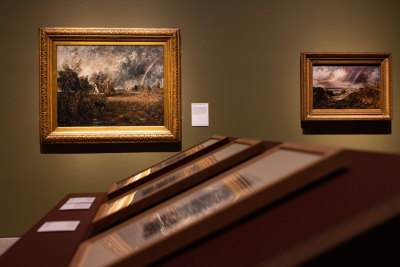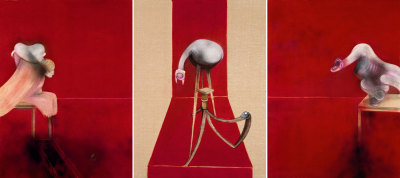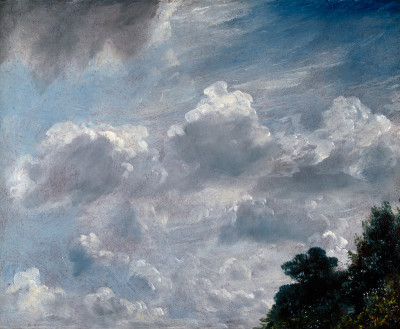Explore the John Madejski Fine Rooms rehang
Explore the John Madejski Fine Rooms rehang
Series: Curator's Picks
By Helen Valentine
Published 14 October 2014
Learn more about some of the highlights of our Collection that have recently gone on show in the John Madejski Fine Rooms.
-
Some of the John Madejski Fine Rooms have recently been rehung with works from the Royal Academy’s Collection and can be seen on one of the free tours, which take place at 1pm Tuesdays to Fridays, 3pm Wednesdays to Fridays and 11.30am on Saturdays.
-

Sir Joshua Reynolds PRA, Giuseppe Marchi, 1753.
Oil on canvas. © Royal Academy of Arts, London.
-
Highlights of the new hang include Sir Joshua Reynolds’s portrait of Giuseppe Marchi (ca.1721–1808), a mezzotint engraver and occasional portrait painter. Reynolds met Marchi in Rome and then asked him to follow him to London, which he did in 1752. Despite Reynolds’s complaint in a letter the following year that “Giuseppe is grown so intolerably proud that I fear we shall not keep long together”, Marchi went on to serve as his chief studio assistant for forty years.
In this portrait, painted during the first year of Marchi’s employment, the hauteur that Reynolds complained of is theatrically expressed in the sitter’s exotic costume of white turban and red fur-lined coat.
-

Sir Martin Archer Shee, Portrait of the Artist’s Son, William, c.1820.
Oil on canvas. © Royal Academy of Arts, London.
-
This painting by Sir Martin Archer Shee is an affectionate portrait of his third and youngest son William who was born in 1810. Aged about 10 years old, he is posed in a Romantic landscape and dressed in a fashionable suit with high waisted trousers and a ruffled collar. Stylistically this painting owes much to Archer Shee’s contemporary, Sir Thomas Lawrence, but it precedes his portrait of Master Lambton (Private Collection), popularly known as The Red Boy, by five years.
Shee was born in Dublin and studied at the Royal Dublin Society before moving to London in 1788. There he became friends with Sir Thomas Lawrence and entered the Royal Academy Schools in 1790. It was his work as a portrait painter which found him most success as well as his involvement with the running of the Royal Academy. He was elected President after Lawrence’s death in 1830.
-

Henry William Pickersgill RA, The Oriental Love Letter, 1824.
Oil on canvas. © Royal Academy of Arts, London.
-
H.W. Pickersgill’s painting which he gave to the Royal Academy following his election as an Academician in 1826 is on a much grander scale and reflects a growing European interest in oriental subject matter in the first half of the 19th century. Scenes from the harem were particularly intriguing to the Victorian public and Pickersgill’s wife Maria published Tales of the Harem in 1827.
The woman dressed in richly embroidered clothing has just received a bouquet of flowers which are a symbolic, and possibly clandestine, ‘love letter’. The emblematic possibilities of various flowers was alluded to in the verses by Lord Byron quoted in the catalogue when the painting was first exhibited at the Royal Academy in 1824:
‘the token-flowers that tell
What words can never speak so well
By love’s alternate joy and woe’
-

Frederick Richard Pickersgill, The Bribe, 1857.
Oil on panel. © Royal Academy of Arts, London.
-
Moving into the Victorian period there are two paintings on show by artists who enjoyed painting historical subjects with open-ended possibilities which the viewer was meant to ponder on. P.H. Calderon was particularly interested in depicting the most romantic era of English history, the Tudors and Stuarts. In the summer months many of the group retreating to Hever Castle, the childhood home of Anne Boleyn, and it is likely that this is where Calderon painted Whither?
The picture depicts two figures in sixteenth-century dress, an apprehensive girl following a bearded man through an outside door onto a drawbridge. Contemporary critics felt there might be ‘a tragedy for its ending’ but it is open to interpretation.
-

Philip Hermogenes Calderon, Whither?, 1867.
Oil on canvas. © Royal Academy of Arts, London.
-
When it was first exhibited at the Academy in 1858, Pickersgill’s diploma work was accompanied by the following quotation from a Spanish ballad:
“She tempted the Alcaydé with her jewels and her gold,
And unto her his prisoner that jailer false hath sold.”The subject of the picture allows the artist to contrast the soft drapery of the woman’s green dress with the shiny armour of the gaoler, as well as youth with age, and to demonstrate his skills in the meticulous painting of the casket of jewels. Pickersgill’s use of strong colour shows the influence of Titian and other old masters of 16th-century Venice. Again this work leaves open the question for the viewer to imagine of whom exactly is imprisoned behind the door.
To join one of the tours meet in the Entrance Hall of Burlington House. Tour times may vary on occasion – please call 020 7300 8000 before your visit to confirm.
Helen Valentine is the RA Collection’s Senior Curator.








